
As noted by Houses and Holes earlier today, the Australian Bureau of Statistics (ABS) today released the national accounts for the March quarter today, which registered very strong 1.3% increase in real GDP over the quarter and a 4.3% rise over the year.
The below chart shows the breakdown by component compared to the previous quarter:
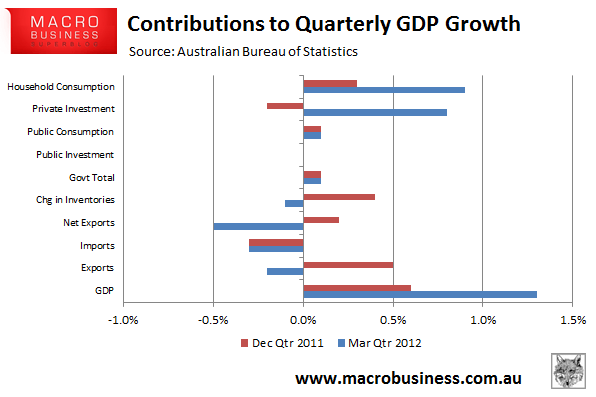
As you can see, the 1.3% increase in real GDP over the quarter was driven by a 0.9% rise in household consumption expenditure and a 0.8% increase in private investment, which more than offset a -0.5% fall in net exports.
While the strong growth in private investment was not surprising, given the massive mining-related capital investment currently underway, the large jump in private consumption expenditure was a bit of a shock, and was the strongest result since December 2007.
A breakdown of private consumption expenditure growth is provided below. As you can see, growth was broad-based, but concentrated in transport services (+5.5%), food (+3.7%) and health (+2.6%).
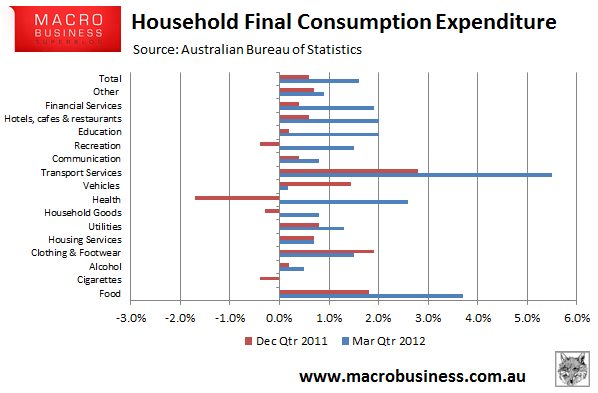
Western Australia drove the jump in GDP, with state final demand increasing by 7.8% over the quarter. Victoria (1.8%) and South Australia (+1.7%) also experienced solid growth, offsetting the poor showing in the previous quarter:
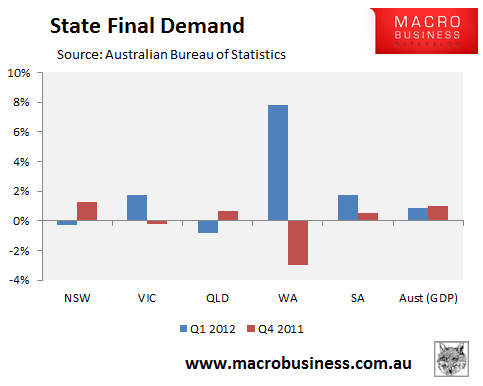
The resource states of Western Australia and Queensland have also driven the annual result, posting growth in final demand of 14.5% and 7.5% respectively in the year to March 2012, with Queensland’s growth positively impacted by the bounce-back from last year’s floods:
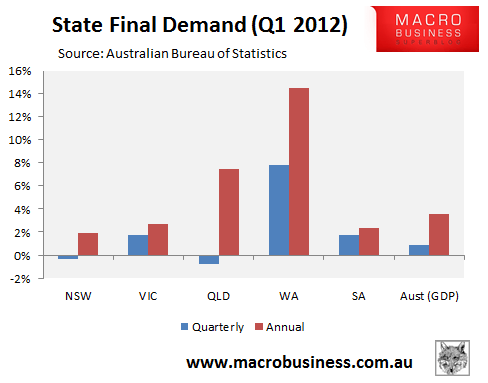
Arguably, one of the best stories to come out of this release is that productivity grew strongly over the quarter, with real GDP per hour worked increasing 2.0% over the quarter – the best result since June 1997! The structural adjustment under way may be creating greater efficiencies in the weaker sectors:
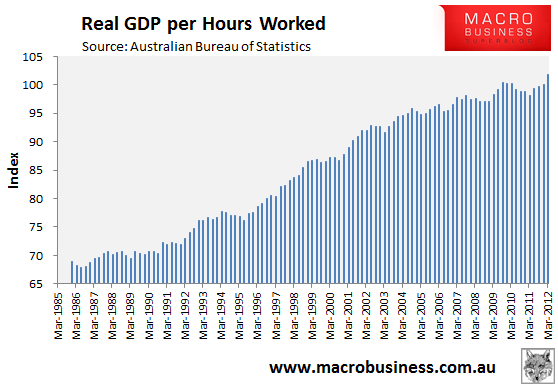
Finally, the household savings ratio fell slightly over the quarter to 9.3% from 9.4%, and remains well above the levels of the 2000s housing/credit boom, but below the recent peak level of 12.6% reached in December 2008 at the height of the financial crisis:
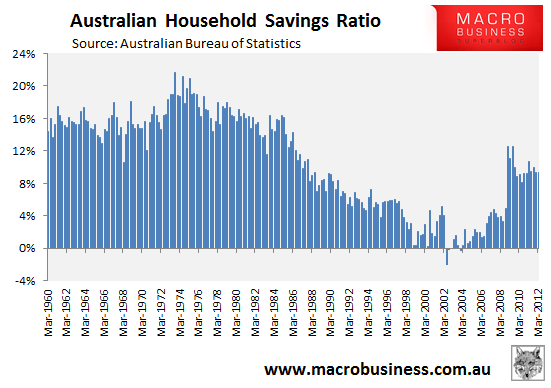
To us, it looks as if the -0.5% easing of official interest rates in November and December 2011 seems to have done the trick in boosting domestic demand.
That said, readers should keep in mind that the result, while undoubtedly strong, is backward looking, covering the first quarter only. And we know from the more recent data points that the Australian economy appeared to hit a speed bump in April, which will adversely affect next quarter’s GDP print. We also saw in December that the private investment boom can be volatile, given it is driven by a relatively small number of very large projects. It is, therefore, possible that GDP will prove just as volatile.

